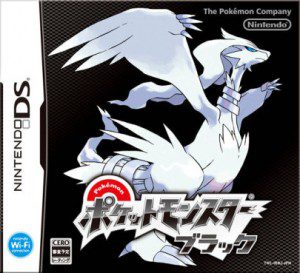 Way back in the late 1990s, it was impossible to go anywhere without seeing something related to Pokemon. As a fad, it hit like a truck, with a video game, animated television series and best-selling collectible card game. The main driving force behind the wide appeal of the phenomenon was centered around the popular Game Boy titles Pokemon “Red” and “Blue.” The games, which were simplified Japanese-style RPGs that revolved around a boy collecting and training creatures known as “Pokemon” or Pocket Monsters, were devoured by fans young and old, thanks to their extremely easy gameplay and the task that you “Gotta catch em all,” as the jingle went. Indeed, the collectibility of the monsters themselves often overshadowed the battling itself, as fans traded with each other in order to catch those rare and unique monsters that only appeared once throughout the game, or were lost forever. As the series went through its successive generations of “Gold/Silver,” “Ruby/Sapphire,” and “Diamond/Pearl,” the games began to add new material, longer and more developed stories, and, more importantly, more Pokemon. What began as 150 little critters (or 151, if you could actually FIND the infamous “Mew”) eventually ballooned to 385 by the end of the GBA generation, and shot even further to 493 with the massively successful transition to the Nintendo DS.
Way back in the late 1990s, it was impossible to go anywhere without seeing something related to Pokemon. As a fad, it hit like a truck, with a video game, animated television series and best-selling collectible card game. The main driving force behind the wide appeal of the phenomenon was centered around the popular Game Boy titles Pokemon “Red” and “Blue.” The games, which were simplified Japanese-style RPGs that revolved around a boy collecting and training creatures known as “Pokemon” or Pocket Monsters, were devoured by fans young and old, thanks to their extremely easy gameplay and the task that you “Gotta catch em all,” as the jingle went. Indeed, the collectibility of the monsters themselves often overshadowed the battling itself, as fans traded with each other in order to catch those rare and unique monsters that only appeared once throughout the game, or were lost forever. As the series went through its successive generations of “Gold/Silver,” “Ruby/Sapphire,” and “Diamond/Pearl,” the games began to add new material, longer and more developed stories, and, more importantly, more Pokemon. What began as 150 little critters (or 151, if you could actually FIND the infamous “Mew”) eventually ballooned to 385 by the end of the GBA generation, and shot even further to 493 with the massively successful transition to the Nintendo DS.
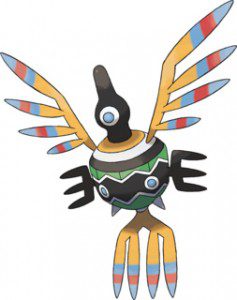
This past March, the DS received what is its third, and most likely last, generation, Pokemon Black and White. (For the purposes of this review, I will be referring to the game Pokemon Black, as it is the one I purchased.) This game added another 156 Pokemon to the mix, along with a massive new region of Unova for players to explore. While this may seem like a further expansion to an already massive series, a few things need to be taken into account.
Firstly, unlike other games in the series, Unova is based not on a region in Japan, but rather on a very simplified United States. Over the course of the game, players were visit cities like “Castelia,” based on New York, “Driftveil,” akin to Las Vegas and “Nimbasa” (which to me felt like Scranton, PA, but I doubt the designers were thinking the same). These cities are much larger and more richly designed than in other games in the series (especially Castelia, the first fully 3D rendered city in Pokemon history) and are full of unique people and shops.
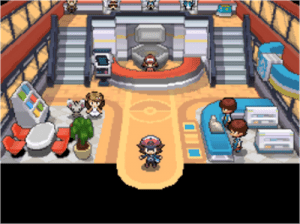
In addition, the Pokemon Centers have all be fully revamped, now including a built-in Pokemart on the main floor (along with a sporty 3D refinishing). Add to this the fact that, for the first time, the seasons and weather change based on whatever month it is in the real world; there is now “high grass” where the rate of encounter is increased and double battles occur; and the new “rotation battle” system, and you have the richest, most expansive Pokemon world developed to date.
The Gyms have also been dramatically overhauled. Multi-level challenges, often with mazes and puzzles are the rule of the day, more than in any other entry in the series. (One stage requires you to navigate via elevators, while another actually fires you out of cannons to reach the gym leader.) These fancy new digs come with even more personable Leaders, who no longer just sit around waiting for you, but actually take a much bigger hand in the developing story, and have a cluster of personalities as eccentric as any would expect from the United States. (Especially Clay, the 5th Gym Leader, who speaks, acts and dresses like a Texas Oil Baron.) And when their part is done, they put up some of the best challenges of any recent Pokemon title.
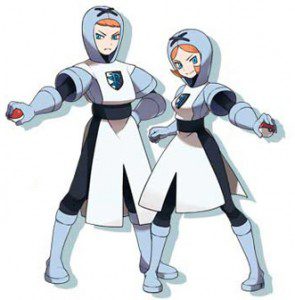
Much like the other Pokemon games, the story is extremely simple. Team Plasma seeks to “rescue” Pokemon from what they feel are selfish trainers who abuse them. That’s about it. While the idea of protecting defenseless monsters from oppression is a noble goal, and an interesting look into Japanese social philosophy, they barely get any deeper than the surface, and I often found myself nostalgic for earlier games in the series. While definitely a step ahead of the “Team Rocket”- oriented Gold/Silver generation, it lagged behind the twists and suspense (yes, I said suspense) present in 2009’s near-flawless Platinum. The addition of a questioning rival (who felt to me like a foreigner) and the Dreamworld were very welcome, however, and gave the game a bit more depth than just running around looking for fights. That, and Plasma’s uniforms looked kinda cool.
But this is all secondary stuff. The real meat of the game comes down to the Pokemon themselves. After all, what would a new Pokemon game be without more monsters to collect? Right off the bat, Pokemon Black differentiates itself from every other game in the series by ONLY ALLOWING YOU TO CATCH AND USE POKEMON FROM THIS GENERATION. That’s right- to all the players who like to send over their wickedly powerful minions who they’ve been training for the past 5 or so years, too bad. This time through, everyone starts out on the same playing field, with the same choices. (Well, not everyone- if you were lucky enough to go to one of the Gamestop events over the past 2 months, you received a shiny legendary that can be
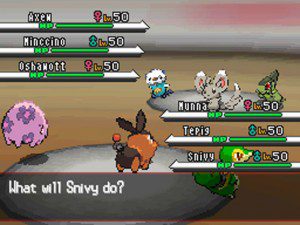
sent over to the new game for a nice, tricky Zorua/Zoroark. And if you managed to get the game before April 6th, and have access to wifi connectivity, you can obtain the Liberty Pass and catch the game’s first legendary, the versatile and powerful Victini.) Traveling through a world populated by new Pokemon returns the series to its original roots, mostly because you have no idea what any of these Pokemon do, and unless you feel like looking up a guide, most people will choose their party based on type and appearance, much like they did way back in Red/Blue.
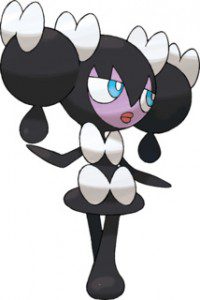
As far as the new Pokemon go, they are a colorful bunch, but most do not stand out from earlier versions. Sawk/Throh are this game’s Hitmonchan/Hitmonlee, Timburr and its line are the Machops, Patret is the new Rattata (in moves, not utility) and the bugs are still there essentially unaltered. In fact, until you pass the first few cities, there is little reason to use the Pokemon you find. Later on, you get some true powerhouses- Sandile is a ground/dark type that can slaughter just about anything by final form. Gothita starts out as a “Lolicon” psychic type that eventually learns some very wicked Psychic/Dark attacks and Darumaka completely outclasses the Fire starter by miles. There’s even a Togepi-like flyer called the Sigilyph that blends air and psychic attacks and can wreak havoc on a underprepared party. The designs of these Pokemon are absolutely perfect, though, and a welcome change of pace from “more of the same” as I’ve encountered in recent entries.
For the starters, this is yet another game that loves Fire, gives a very useful Water and a completely pointless Grass type. Tepig, the Fire starter is a powerful, but VERY slow sweeper that packs a huge punch, but even with EV training often acts last in a fight. Oshawott, despite looking completely ridiculous, is a solid Water type in a game lacking a lot of solid Water types. Snivy looks the best of all three, but also has the fewest uses in game. (In fact, there is little reason to even have a Grass type in Black, and the Pansage is a better choice overall.) Also diverging from other games, you get a “second starter” in the form of a “legendary monkey” when you reach the first city. This monkey is always weak to your starter, but strong to the first gym, and learns a solid move set should you choose to keep him around, just don’t make the mistake of evolving him right away, as he can no longer learn moves after evolving.
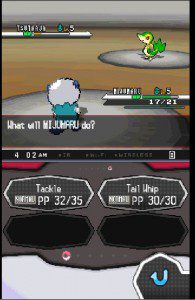
The moves themselves are different, now TMs are no longer used up after one application. This gives them the potential to be abused frequently, but also
allows for a deal of “customization” between battles. Just don’t get too carried away, HMs still need to be unlearned as before. The moves themselves are exactly the same as in previous games also, so don’t expect anything new like the Pokemon. At least you know what they’re going to do at any rate.
All in all, Pokemon Black is a very welcome addition to the series. It’s not perfect by any means- I wish the annoying C-Gear system was replaced by something more useful, like the touch screen menu in SoulSilver, I wish some of the Pokemon were more useful and not just move-clones of older critters, I wish they kept the sprite of your lead monster following you, and I wish the story was closer to Platinum, or at least came with an awesome monster to hunt, but all in all, Pokemon Black is a very nice addition to an aging franchise, and the “reboot” many older players were asking for.
As for my party: Devawott, Galvantula, Zoroark, Krookodile, Sawk and Victini saw me through the entire game and through the Elite 4 multiple times. I especially recommend Krookodile- that thing can one shot the entire Elite 4 with relative easy.

